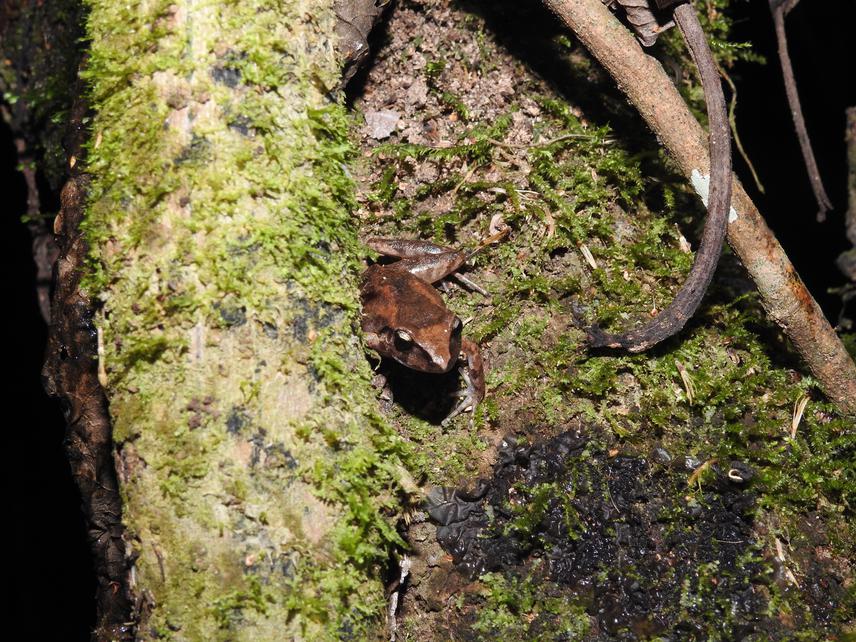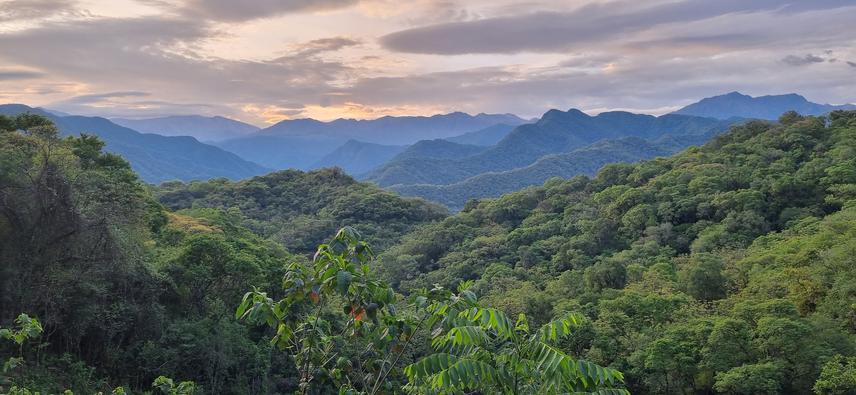Lara Inés Baccaro
Other projects
21 Sep 2022
Confused Robber Frog (Oreobates berdemenos) as a Model to Assess and Propose Conservation Efforts in the Southern Andean Yungas Forest
The MAB-UNESCO Yungas Biosphere Reserve (YBR) spans 1,350,000 hectares in Jujuy and Salta provinces, Northwestern Argentina, and represents the southernmost range of the Tropical Andes biodiversity hotspot. Despite its conservation importance, habitat loss is fragmenting the Yungas forest, threatening its rich biodiversity, particularly amphibians.

Flag species Oreobates berdemenos (Confused Robber frog). ©Pablo Contreras.
Our project aims to identify high-priority areas for amphibians based on genetic diversity and environmental requirements to design a corridor ensuring their connectivity. Community-based conservation projects offer a sustainable and powerful tool for achieving this goal, as collaboration with local communities fosters deeper understanding and more effective conservation strategies.

Baritú National Park – Yungas Andean forest. ©Facundo J. Alvarez.
Local communities around the YBR have long protected their environments through reciprocal relationships with nature. Many rely on eco-tourism for income and to promote their ancestral traditions. Given the threats of habitat loss and climate change, building robust community-based conservation programs within the YBR is crucial for long-term success.
This project is the first in the region to propose community-based amphibian conservation. Our mission is to safeguard endemic and threatened amphibians through community engagement, scientific research, and public awareness. We will work with local communities to create frog-watching/listening trails, training them in amphibian identification and data collection. This initiative will enhance conservation efforts and provide communities with cultural visibility and a new ecosystemic service.
Public awareness will focus on the link between cultural and biological diversity in the YBR. An Anuran Diversity Field Guide will include traditional knowledge and highlight amphibian conservation and community relationships. This guide, along with educational activities and social media outreach, aims to engage the public in conservation efforts and raise awareness of the challenges facing the Yungas Andean Forest and its amphibians.
Through conservation genetic analyses, we will shed light on the evolutionary paths of endemic amphibians in the YBR, their intraspecific diversity, and define conservation units considering their evolutionary history. Protecting these evolutionary units will benefit both the species and the environments shaping their history. We will develop a biological corridor proposal between Priority Conservation Areas based on genetic diversity, environmental requirements, and key stakeholder perceptions. This proposal will include five endemic amphibian species with different conservation concerns inhabiting YBR: Gastrotheca chrysosticta (Baritu’s Marsupial Frog; Endangered), Rhinella gallardoi (Yungas’ Toad; Endangered), Oreobates berdemenos (Confused Robber Frog; Vulnerable), Oreobates barituensis (Baritu’s Robber Frog; Near Threatened), and Melanophryniscus rubriventris (Yungas’ Red-Belly Toad; Least Concern). Using new data on several amphibian species, we will identify suitable and robust corridors to enhance connectivity.
Header: Working with local communities. ©Lara Baccaro.